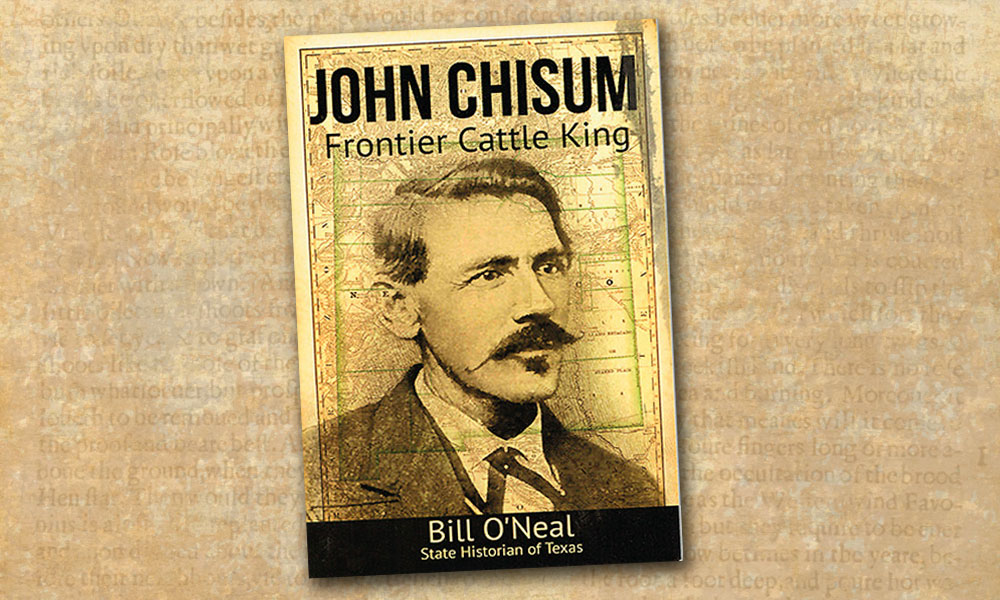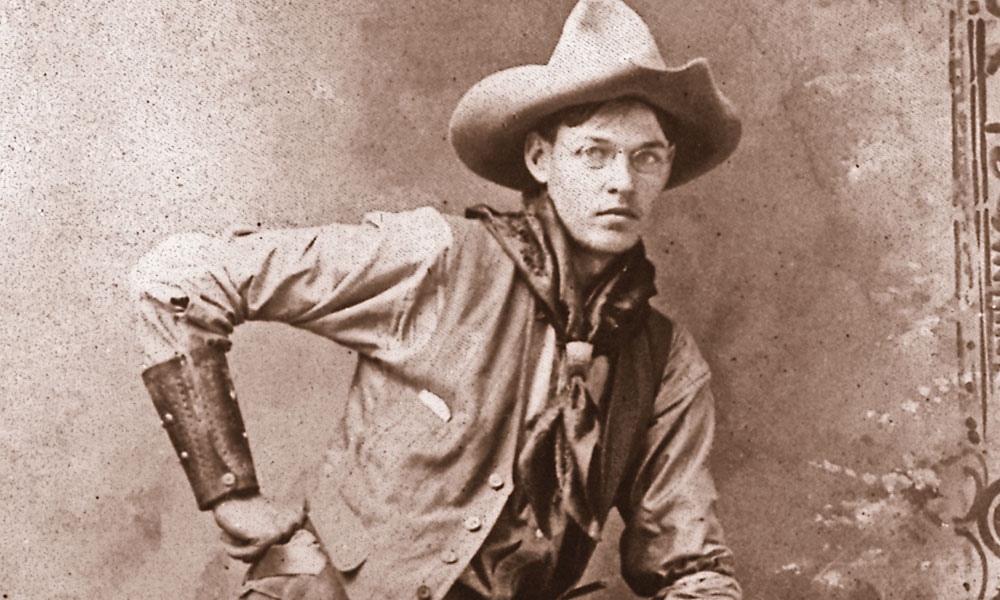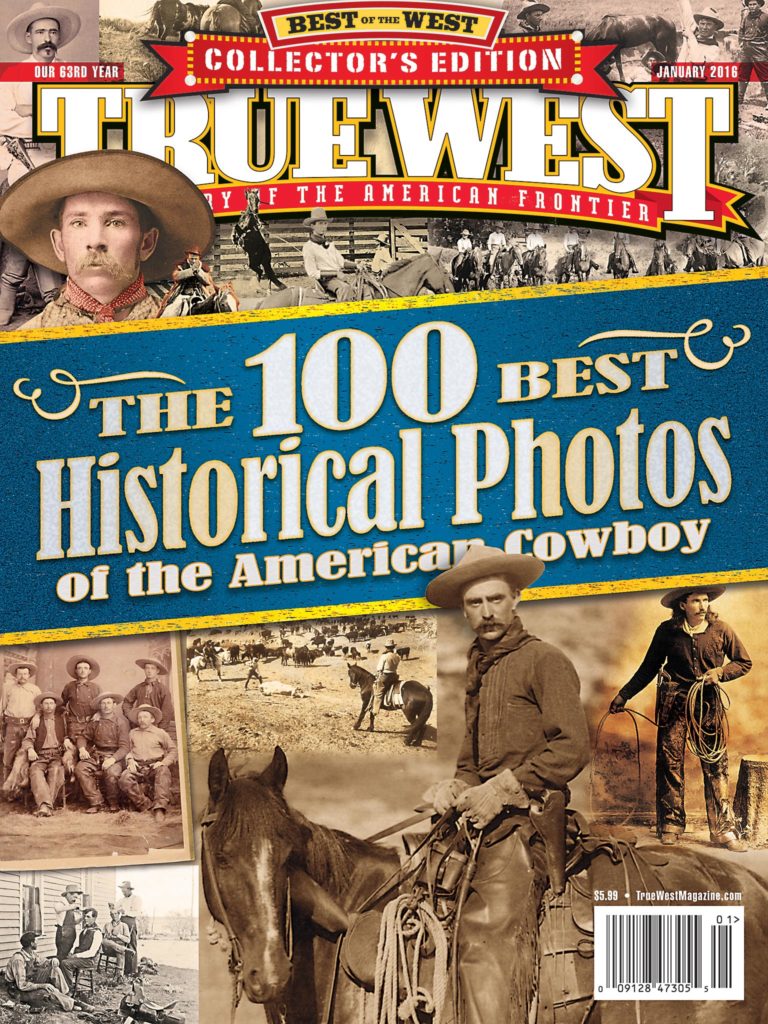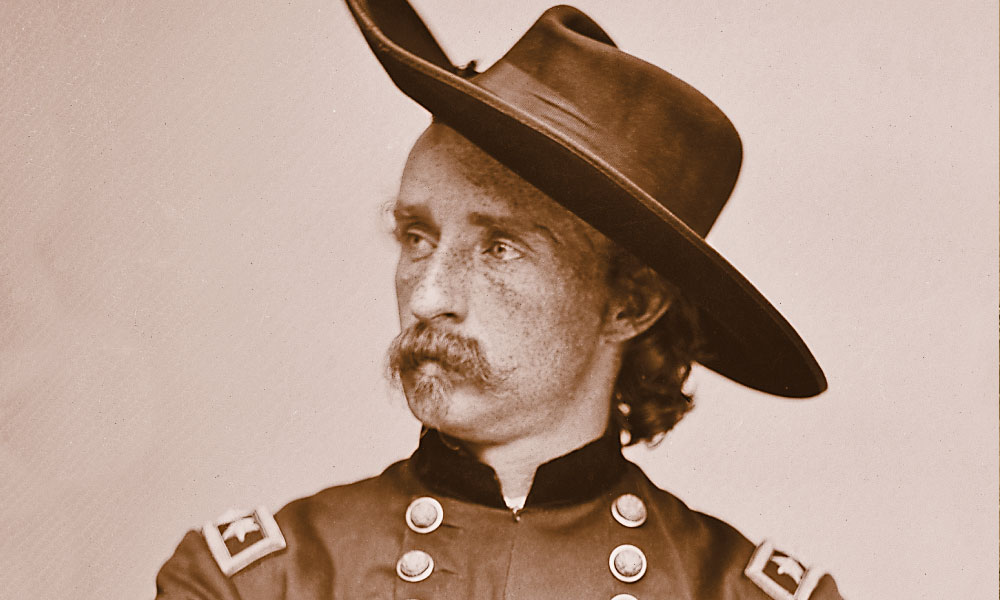
The Michigan native’s heroic journey into infamy was a popular subject of historians and novelists in 2015.
– Courtesy Library of Congress –
The original hero of publishing, Johannes Gutenberg would be amazed at the state of books in 2015…and I dare say he would love it. Despite cries from all corners about the death of the book, the publishing of Western books remains dynamic. Publishers—large and small, mass-market and academic, from the New York houses to the independents, and self-publishers—are releasing Western books in every medium and genre possible.
Joseph Campbell, author of the groundbreaking The Hero with a Thousand Faces (Pantheon Books, 1949), would be fascinated by Western publishing in 2015, as his hero’s journey, both tragic and heroic, flawed by the seven sins of humanity, remains the centerpiece of Old West nonfiction and fiction. Authors especially liked writing about George Armstrong Custer, who was the subject of three major biographies, an active subject of debate in numerous Plains Indian and end-of-the-Civil War monographs and syntheses, and a literary character in several national, regional and self-published historical novels. What is the fascination with Custer, 139 years since his death at the Battle of the Little Big Horn? In an era of hyperbole and hyperactive politics of celebrity, Custer, the boy-general from Michigan—like limelight-loving Buffalo Bill Cody—reminds us of the eternal flaws of Campbell’s hero and its ongoing resonance to us as human beings. “Throughout the inhabited world, in all times and under every circumstance, myths of man have flourished; and they have been the living inspiration of whatever else may have appeared out of the activities of the human body and mind.”
Campbell’s insightful theory, I believe, is why publishers, like their film and television producer peers, consciously or unconsciously favored nonfiction authors who wrote about well-known Western personalities, or scribes who incorporated legendary figures into their historical fiction plots. In addition to Custer, Doc Holliday, Bat Masterson, Wyatt Earp, the post-Civil War Plains Indian Wars, Dodge City, Deadwood and Texas history dominated many of the subjects and plots of 2015 nonfiction and fiction, with Custer—and his failure at the Little Big Horn—far and away a favorite subject of historians and fiction authors.
As both a reviewer and a reader who enjoys good historical fiction, I would applaud Western publishers who in 2016 embrace authors writing fiction with original characters on heroic journeys and plot lines that are not based on real history. But, I won’t hold my breath , since I remember that many of William Shakespeare’s most popular plays were based on historic—and very flawed—figures.
In 2015, Western history and fiction publishers also continued to mine the rich heritage of antebellum North America as well as extended the timetable of Old West history well into the 20th century. In fact, the best history being published today compares the historical figure, subject or topic in context to the 21st-century West. I believe that historians who seek out the living descendants of their historical subject, as well as visit the modern locations of their research topic, best assure that their biographies or monographs are relevant to today’s reader, rather than just a synthesis of previously published information. This methodology is seen mostly in American Indian and environmental history, but I believe that historians of Western settlement, frontier, law and order, military, mining, agriculture, industry, gender and urban life would provide their readers with greater perspective if they examined their topic through the lens of the present as well as the past.
Last year will also be remembered for the blur between the real and an imagined West, as Western fact and fiction, legends and lies, were heatedly discussed across all mediums—print, television, film and the Internet—as FOX News and HISTORY aired their respective documentary/docudrama TV series, Bill O’Reilly’s Legends & Lies and Texas Rising to great debate, praise and criticism. The good news: the popularity of Western history grew in the eyes (and pocketbooks) of Hollywood, and 2016 film and television audiences will be treated to more Western movies, dramatic series and docudrama/documentary entertainment. From a publishing perspective, celebrity biography continues to be a safe bet for imprints, large and small, while Western art and photography remain very popular.
Reflecting the two major publishing trends of 2015, the hero’s journey and the real and imagined West, my top authors and books for 2015 are: T.J. Stiles’s Custer’s Trials: A Life on the Frontier of a New America, Robert Utley’s Wanted: The Outlaw Lives of Billy the Kid & Ned Kelly, Mary Doria Russell’s Epitaph: A Novel of the O.K. Corral, Victoria Wilcox’s The Last Decision, Paul Seydor’s The Authentic & Contentious Afterlife of Pat Garrett and Billy the Kid: The Untold Story of Peckinpah’s Last Western Film and B. Byron Price’s The Sons of Charlie Russell: Celebrating Fifty Years of the Cowboy Artists of America.
—Stuart Rosebrook
Best Author and Biography
Custer’s Trials: A Life on the Frontier of a New America by T.J. Stiles (Alfred A. Knopf).
The Pulitzer Prize-winner’s Custer’s Trials will be the benchmark biography of the iconic and infamous George Armstrong Custer for many years because of his synthesis of the source material that views flawed, celebrity American leadership from the perspective of his private and public lives. This allows us to understand his successes, failures and character weaknesses that are as relevant today as they were at the time of his death in 1876.
Best of the Rest
Indian History: Red Cloud: Oglala Legend by John D. McDermott (South Dakota Historical Society Press).
Military: A Splendid Savage: The Restless Life of Frederick Russell Burnham by Steve Kemper (W.W. Norton & Company).
Women/Minorities: My Life as a Whore: The Biography of Madam Laura Evens, 1871-1953 by Tracy Beach (Johnson Books, A Big Earth Publishing Company).
Era of Empire: Juan Bautista de Anza: The King’s Governor in New Mexico by Carlos R. Herrera (University of Oklahoma Press).
Law & Order: The Notorious Luke Short: Sporting Man of the Wild West by Jack DeMattos and Chuck Parson (University of North Texas Press).
Best Nonfiction
Wanted: The Outlaw Lives of Billy the Kid & Ned Kelly by Robert M. Utley (Yale University Press).
Year after year Robert M. Utley, the master of Western history, continues to amaze us all with his insightful research and conclusions about American Western history and the characters that inhabited it over a century ago. It also should be no surprise that his latest biography, Wanted: The Outlaw Lives of Billy the Kid & Ned Kelly, is an imprint of Yale University Lamar Series in Western History, a leader for decades in interdisciplinary research on the West. After Utley’s Wanted, I am not sure if another biography of Billy the Kid can reach this level of scholarship.
Best of the Rest
Indian History: Masters of Empire: Great Lakes Indians and the Making of America by Michael A. McDonnell (Hill and Wang).
Military/Empire: The Gray Fox: George Crook and the Indian Wars by Paul Magid (University of Oklahoma Press).
Women/Minorities: Ladies of the Canyons: A League of Extraordinary Women and Their Adventures in the American Southwest by Lesley Poling-Kempes (University of Arizona Press).
Law & Order: Prairie Man: The Struggle Between Sitting Bull and Indian Agent James McLaughlin by Norman E. Matteoni (TwoDot).
Exploration: A Way Across the Mountain: Joseph Walker’s 1833 Trans-Sierran Passage and the Myth of Yosemite’s Discovery (The Arthur H. Clark and Company).
Best Fiction
Tie: Epitaph: A Novel of the O.K. Corral by Mary Doria Russell (Forge) and The Last Decision, Volume 3 in the “Southern Son: The Doc Holliday Saga” series by Victoria Wilcox (Knox Robinson Publishing).
Mary Doria Russell’s Epitaph: A Novel of the O.K. Corral and Victoria Wilcox’s The Last Decision are both outstanding—and complementary—novels that punctuate the 2015 trend of authors and publishers celebrating the hero’s journey using iconic characters. Although their writing styles are different, between them, Russell and Wilcox have written five books on John Henry “Doc” Holliday. These competing volumes vividly contribute to our knowledge of the gunfighter’s life through excellent research. They’ve helped to elevate Holliday’s literary status to a rarified seat in the mythic West’s Camelot, a true knight of the Old West roundtable.
Best of the Rest
Old West: Buffalo Trail by Jeff Guinn (Putnam).
Mystery: Moonshadows by Julie Weston (Five Star).
21st Century: Grave Consequences: A Charlie Henry Mystery by David and Aimée Thurlo (Minotaur Books).
Mountain Man Era: Into the Savage Country by Shannon Burke (Pantheon).
Paranormal: Giving Up the Ghost by Max McCoy (Kensington).
Best Cultural West
The Authentic & Contentious Afterlife of Pat Garrett and Billy the Kid: The Untold Story of Peckinpah’s Last Western Film by Paul Seydor (Northwestern University Press).
With the hero’s journey the theme of publishing in 2015, Paul Seydor’s The Authentic & Contentious Afterlife of Pat Garrett and Billy the Kid: The Untold Story of Peckinpah’s Last Western Film breaks new ground in our understanding of the real and imagined West—and the universal nature of heroes, villains, sinners, saints, men and women epically traveling through time as symbols of human beings’ common struggles with right and wrong—and the moral line—for time immemorial.
The Best of the Rest
1. Western Art Masters: Painted Journeys: The Art of John Mix Stanley by Peter H. Hassrick and Mindy S. Besaw (University of Oklahoma Press).
2. Classic Western Art: Windows on the West: The Art of Frank Reaugh edited by Peter F. Mears (Harry Ransom Center, Tower Books, University of Texas Press).
3. Western Landscape Art: Irby Brown: Southwest Landscape Paintings by Richard Brunson edited by Joshua Falconer (University of New Mexico Press).
4. Western Film: The Making of John Wayne’s The Alamo, Not Thinkin’…Just Rememberin’… by John Farkis (Bear Manor Media).
5. Cowboy Culture: Unbranded: Four Men and Sixteen Mustangs. Three Thousand Miles across the American West by Ben Masters (Texas A&M University Press).
Best Photography/Illustrated Book
The Sons of Charlie Russell: Celebrating Fifty Years of the Cowboy Artists of America by B. Byron Price (University of Oklahoma Press).
Many mediums define and influence our idea of the American West and the medium of Western art has been, and continues to be, a major cultural influence. B. Byron Price’s highly illustrated volume The Sons of Charlie Russell: Celebrating Fifty Years of the Cowboy Artists of America highlights the cowboy artists whose work for half a century has honored the cowboy way of life, Indian culture, the Mountain Man era and the West.
Best of the Rest
Historic: The Great Divide, text by Stephen Grace, photography by Jim Havey (TwoDot).
Cultural: Postcard America: Curt Teich and the Imaging of a Nation, 1931-1950 by Jeffrey L. Meikle (University of Texas Press).
Regional: The Mullan Road: Carving a Passage through the Frontier Northwest, 1859-62, edited by Paul D. McDermott, Ronald E. Grim, and Philip Mobley (Mountain Press Publishing Company).
Landscape: Wyoming Grasslands, photographs by Michael P. Berman and William S. Sutton, by Frank H. Goodyear, Jr. and Charles R. Preston (University of Oklahoma Press).
Geography: Colorado: A Historical Atlas by Thomas J. Noel, cartography by Carol Zuber-Mallison (University of Oklahoma Press).
Best Western Romance
A Long Trail Rolling by Lizzy Tremayne (Blue Mist Publishing).
Romance novels generate well over a billion dollars in book sales worldwide. According to Loren Estleman in Writing the Popular Novel, budding authors wanting to profit from writing should consider Romance. It’s one of the five most profitable genres. (Horror, mystery, science fiction and Westerns round out the five.). If California-born and raised, New Zealand-based veterinarian and author Lizzy Tremayne continues writing Western romances like A Long Trail Rolling, she will not only be successful, but will help perpetuate romance in Westerns as much as Zane Grey did a century ago.
Best of the Rest
1. Against the Tide by Kat Martin (Zebra/Kensington).
2. Now and Forever (“Wild at Heart” series, book two) by Mary Connealy (Bethany House).
3. Hearth Stone by Lois Greiman (Kensington).
4. Bride at Last by Melissa Jagears (Bethany House).
5. A Worthy Pursuit by Karen Witemeyer (Bethany House).
Best New Western Author
Stacey Lee for Under a Painted Sky (Putnam).
Stacey Lee’s debut Western novel Under a Painted Sky is a literary young adult Western in the tradition of the late author Kathryn Swarthout and Spur Award-winner Rod Miller. Lee, a fourth-generation Chinese-American, wrote a highly original adventure story of two young girls, a Chinese immigrant and an African American runaway slave, who discover together how to survive on the Oregon Trail of 1849. The only question readers are left with after the dramatic conclusion is: when is Lee’s sequel going to be published?
Best Publisher
Tie: The University of Oklahoma Press and Five Star Publishing
For nearly 90 years, the University of Oklahoma Press has been a leader in publishing the history of the North American West. Its current Western history catalog is unequalled among university imprints. Five Star Publishing, a division of Gale, Cengage Learning, based in Waterville, Maine, is currently taking a major lead in Western fiction publishing, providing a platform for more Old West and frontier fiction authors than any other current publisher of Old West fiction. Kudos to Five Star Editor Tiffany Schofield for her efforts.
Best of the Rest
National: Penguin Random House, New York, New York.
University: Yale University Press, New Haven, Connecticut.
Electronic: Wolfpack Publishing, LLC, Las Vegas, Nevada.
Old West History: Rowman & Littlefield, Lanham, Maryland.
Mass Market Fiction: Kensington, New York, New York.
Best Western Bookstore
Guidon Books: 7109 E. 2nd St., Scottsdale, Arizona, Guidon.com, (480) 945-8811.
Shelley Dudley’s superior customer service and depth of knowledge and inventory on the Pre-Columbian West to the present makes Guidon Books the best Western bookstore in the U.S. with over fifty years in the Western book business. In downtown Scottsdale, Guidon is perfectly located within walking distance after a tour of the city’s new Museum of the West.
Best of the Rest
Large: Powell’s City of Books, Portland, Oregon, Powells.com.
Medium: Collected Works Bookstore and Coffeehouse, Santa Fe, New Mexico, CWBookstore.com.
Antiquarian: Booked Up, Archer, Texas, BookedUpAC.com.
Specialized: The Poisoned Pen Bookstore, Scottsdale, Arizona, PoisonedPen.com.
Writer’s Haven: Tattered Cover Book Store, Denver, Colorado, TatteredCover.com.
Best Roundup
Antebellum/Early Republic American Frontier History
A strong trend in Western book publishing in 2015 was antebellum/early republic American frontier history (as well as fiction). With the sesquicentennial of the Civil War coming to a conclusion, I predict that publishers and authors will continue to mine this period for new topics, while revisiting evergreens, such as the fur trapper era, Indian relocation, the transcontinental trails, the Mexican-American War, Mormon settlement, the Gold Rush, the Pony Express and Manifest Destiny.
Jacksonland: President Andrew Jackson, Cherokee Chief John Ross and a Great American Land Grab by Steve Inskeep (Penguin).
The Cherokee Diaspora: An Indigenous History of Migration, Resettlement and Identity by Gregory D. Smithers (Yale University Press).
William Wells and the Struggle for the Old Northwest by William Heath (University of Oklahoma Press).
Home Rule: Households, Manhood and National Expansion on the Eighteenth-Century Kentucky Frontier by Honor Sachs (Yale University Press).
Their Lives, Their Wills: Women in the Borderlands, 1750-1846 by Amy M. Porter (Texas Tech University Press).
Self-Published
Self-publishing is revolutionizing the world of books across all genres, and authors of Western fiction and nonfiction are adding great depth and quality to the catalogue with their innovative publishing spirit.
The Walker Party: Across New Mexico and Arizona Territories and Up the Hassayampa River 1861-1863: The Revised Story by Pieter Burggraaf (Pieter S. Burggraaf).
Ten Shoes Up by Gary L. Stuart (Gary L. Stuart).
Call Me Billy: A New Look at the Life of Billy the Kid by Patrick Manley (Patrick Manley).
Lone Jack Kid: The Return by Joe Corso (Black Horse Publishing).
Courage Beyond Expectations: Indian War as told by Those Who Lived It by F.C. Budinger (F.C. Budinger).
20th- to 21st-Century Western Fiction
When does the Old West end and the Contemporary West begin in Western fiction? Whether the line in time is 1920, 1950, 1980 or 2000, contemporary fiction is a dynamic genre from romance to mystery. The adventurous stories of the frontier West are still alive and well, with many publishers broadening the marketplace of contemporary Western fiction.
Firebreak by Tricia Fields (Minotaur Books).
The Darkness Rolling by Win Blevins and Meredith Blevins (Forge).
Anadarko by Tom Holm (University of Arizona Press).
Chasm by Susan Cummins Miller (Texas Tech University Press).
Rock with Wings by Anne Hillerman (HarperCollins).
20th- and 21st-Century Western Nonfiction
Twentieth- and twenty-first century Western nonfiction is a genre that breaks all definitions of subject matter. Historians of the American West may soon be looking at categories not demarcated by millennial delineation, but by historical eras, such as the Revolution to Civil War, Reconstruction to World War II, and post-World War II to present. Authors who use modern topics and current issues of the 21st century to examine pre-1900 history are providing greater context, and offering insight for modern readers into what the West is today.
The Cherokee Kid: Will Rogers, Tribal Identity and the Making of an American Icon by Amy M. Ware (University of Kansas Press).
Sovereignty for Survival: American Energy Development and Indian Self-Determination by James Robert Allison III (Yale University Press).
Grizzly West: A Failed Attempt to Reintroduce Grizzly Bears in the Mountain West by Michael J. Dax (University of Nebraska Press).
Water to the Angels: William Mulholland, His Monumental Aqueduct and the Rise of Los Angeles by Les Standiford (ECCO).
The Great Call-Up: The Guard, The Borders, and The Mexican Revolution by Charles H. Harris III and Louis R. Sadler (University of Oklahoma Press).
Essays, Short Stories, Collections, Reference Books and Edited Papers
Fortunately, publishers annually broaden our knowledge of Western history through the extraordinary work of authors writing and editing volumes of essays, primary sources and short stories. Here is a selection of the best from 2015:
Imagined Frontiers: Contemporary America and Beyond by Carl Abbott (University of Oklahoma Press).
Tejano West Texas edited by Arnold De Leon (Texas A&M University Press).
Just South of Zion: The Mormons in Mexico and Its Borderlands edited by Jason H. Dormandy and Jared M. Tamez (University of New Mexico Press).
Transnational Indians in the North American West edited by Clarissa Confer, Andrae Marak and Laura Tuennerman (Texas A&M University Press).
Contested Empire: Rethinking the Texas Revolution edited by Sam W. Haynes and Gerald D. Saxon (Texas A&M University Press).
Short Stories
Charlie Martz and Other Stories: The Unpublished Stories by Elmore Leonard (William Morrow).
Crow Fair: Stories by Thomas McGuane (Alfred A. Knopf).
A Manual for Cleaning Women: Selected Stories by Lucia Berlin, edited by Stephen Emerson (Farrar, Straus and Giroux).
The Land of Rain Shadows, Horned Toad, Texas by Joyce Gibson Roach (Texas Tech University Press).
Half an Inch of Water: Stories by Percival Everett (Graywolf Press).
Collections of Edited Papers
Before the Big Bonanza: Dan De Quille’s Early Comstock Accounts edited by Donnelyn Curtis and Lawrence I. Berkove (University of Missouri Press).
Twenty-Five Years Among the Indians and Buffalo: A Frontier Memoir by William D. Street, edited by Warren R. Street (University of Kansas Press).
The Great Medicine Road, Narratives of the Oregon, California, and Mormon Trails, Part 2: 1849 edited by Michael L. Tate, with the assistance of Will Bagley and Richard L. Rieck (The Arthur H. Clark Company).
Over the Santa Fe Trail to Mexico: The Travel Diaries and Autobiography of Dr. Rowland Willard edited by Joy L. Poole (The Arthur H. Clark Company).
Adios Nuevo Mexico: The Santa Fe Journal of John Watts in 1859 transcribed, edited and annotated by David Remley (Texas Tech University Press).
Reference Books
Roadside New Mexico: A Guide to Historic Markers by David Pike, revised and expanded edition (University of New Mexico Press).
Encyclopedia of the American Indian in the Twentieth Century by Alexander Ewen and Jeffrey Wollock (University of New Mexico Press).
Settlers of the American West: The Lives of 231 Notable Pioneers by Mary Ellen Snodgrass (McFarland).
Calamity Jane: A Reader’s Guide by Richard Etulain (University of Oklahoma Press).
Health of the Seventh Cavalry: A Medical History edited by P. Willey and Douglas D. Scott (University of Oklahoma Press).
Best Final Post
Posthumously Published
Wallace Stegner Award-winning Western author Ivan Doig and first-time novelist Wallace J. Swenson both had books published in 2015 after their passings in February and April, respectively. Doig’s Last Bus to Wisdom (Riverhead Books), recounting a cross-country bus trip he took at the age of 12, was released in August. Idaho resident Swenson, who just began his career as a Western novelist, had two Five Star Westerns released last year: Buell: Journey to the White Clouds in June and Pine Marten in November. According to Swenson’s editor, Five Star is working with the family to continue releasing his unpublished manuscripts posthumously.
Western Authors Remembered
Kathryn Swarthout, beloved Western writer, wife of the late Glendon Swarthout and mother of Miles Swarthout, died April 3, 2015. While both her husband and son have enjoyed award-winning careers, Kathryn was well-known for six young adult novellas she co-authored with her husband, including the coming-of-age Western adventure, Whichaway (Random House, 1966).
E.L. (Edgar Lawrence) Doctorow, the best-selling novelist and recipient of the Library of Congress Prize for American Fiction, National Humanities Medal and National Book Critics Circle Award, died July 21, 2015. Welcome to Hard Times (Simon & Schuster, 1960), set in the Dakota Territory, was the first of 12 novels he published between 1960 and 2014.
Best Historical Nonfiction Author
Editors’ Choice : : TJ Stiles and Robert Utley
Readers’ Choice : : Chriss Enss
Best Historical Western Novelist
Editors’ Choice : : Mary Doria Russell
Readers’ Choice : : Victoria Wilcox
Best Western Romance Publisher
Editors’ Choice : : Harlequin
Readers’ Choice : : Bethany House
Best Western History Book Publisher
Editors’ Choice : : Tie: University of Oklahoma Press & Five Star Publishing
Readers’ Choice : : University of Nebraska Press
Best Western History Bookstore
Editors’ Choice : : Guidon Books Scottsdale, AZ
Readers’ Choice : : The Collected Works Book Store Santa Fe, NM
Best Western History University Press
Editors’ Choice : : Yale University Press
Readers’ Choice : : University of North Texas Press
Best Western Music Group
Editors’ Choice : : Sons of the Pioneers
Readers’ Choice : : Riders in the Sky
Best Solo Western Musician
Editors’ Choice : : Dave Stamey
Readers’ Choice : : Michael Martin Murphey
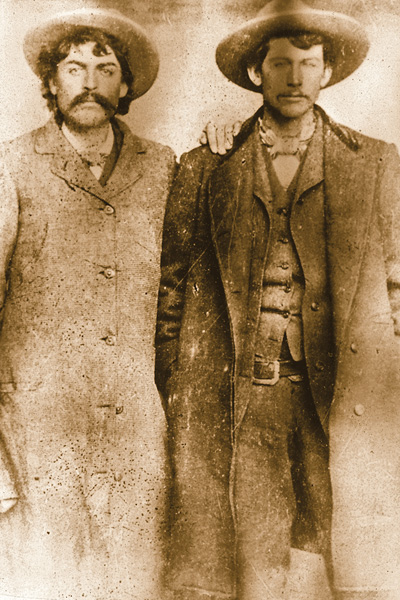
Fred Waite (left) and Henry Brown fought many a battle alongside William Bonney, a.k.a. Billy the Kid, in the Lincoln County War, the infamous 1878 range war fought in New Mexico Territory. Like many photographs from that era, controversy does not elude this image as some historians suspect Waite’s partner in this photo is not Brown, but fellow Regulator John Middleton.
– Courtesy Robert G. McCubbin Collection –
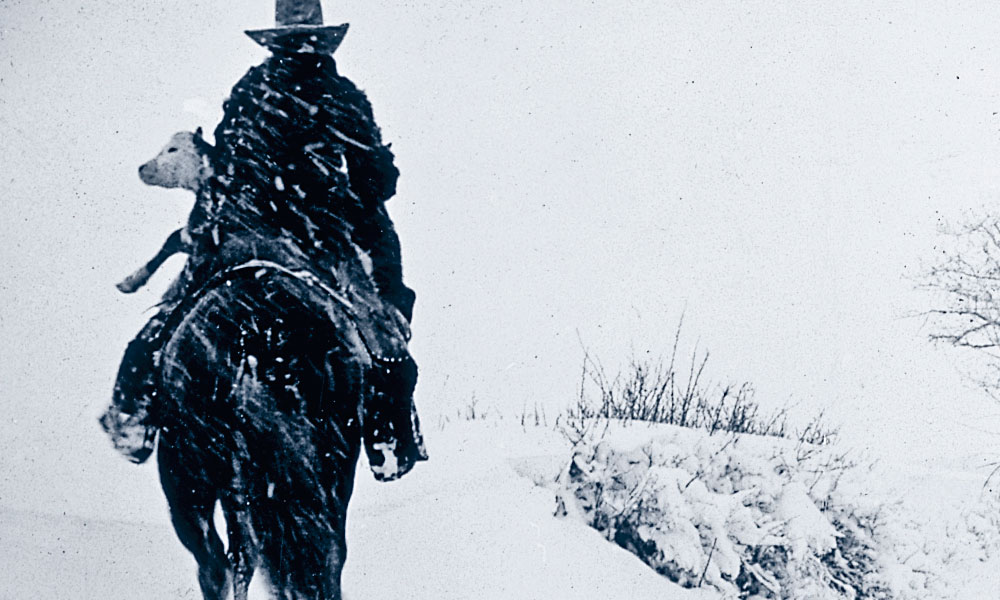
Charles J. Belden’s poignant portrait of rancher Jack Rhodes Sr. saving a calf from the deep snows of winter in Wyoming in 1938-’39 captures the essence of a cowboy’s dedication to his work.
– Courtesy Buffalo Bill Historical Center, Cody, Wyoming, Gift of Mr. and Mrs. Charles Belden –
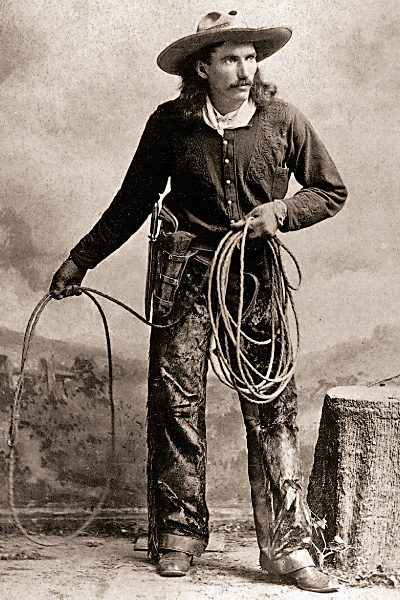
Born in Fredericksburg, Texas, in 1857, William Levi “Buck” Taylor grew up to be the “King of the Cowboys.” He gained notoriety performing cowboy stunts for Buffalo Bill Cody’s Wild West show and became the first cowboy hero of fiction in an 1887 dime novel written by Prentiss Ingraham. He wears his signature red shirt and embroidered sombrero in this circa 1890 publicity photograph.
– Courtesy Robert G. McCubbin Collection –



